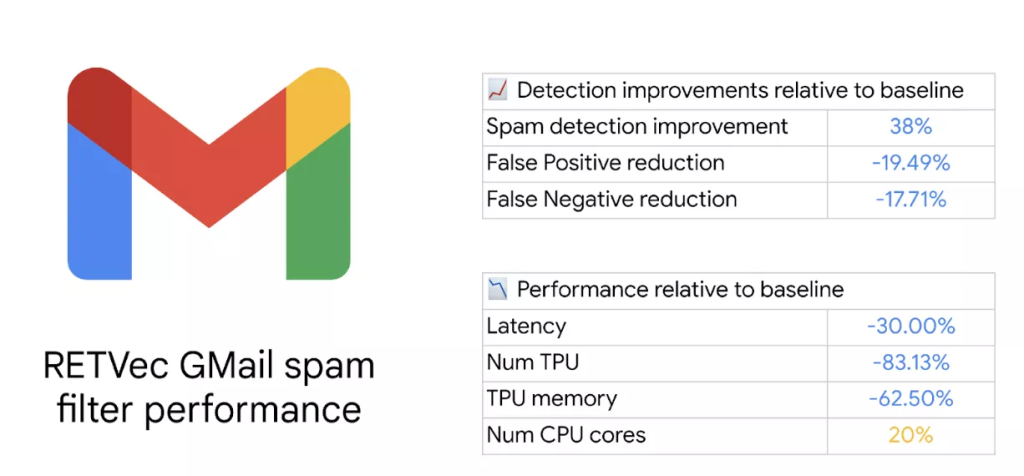Gmail has unveiled its latest update, a significant advancement in spam detection powered by artificial intelligence (AI). This upgrade marks a pivotal step in enhancing user security and substantially improving the rate at which spam is identified and filtered out.

As the world’s most used email service, Gmail’s update is a game-changer in the ongoing battle against spam. The heart of this new system is RETVec (Resilient & Efficient Text Vectorizer), a sophisticated text classification system designed to outmaneuver spammers who have long been bypassing traditional filters.
Spammers often use a range of tactics to evade detection, such as incorporating special characters, emojis, and homoglyphs – characters that closely mimic standard letters but are inherently different. These deceptive methods have historically posed a challenge for conventional spam filters, which primarily focus on character recognition.
RETVec is Google’s response to this challenge. Unlike traditional models, RETVec employs a machine-learning algorithm that focuses on visual similarity, allowing for a more robust detection of deceptive emails. This approach significantly enhances Gmail’s capability to filter out spam and phishing attempts, ensuring a safer email experience for users.
Google has been integrating AI into Gmail’s functionalities for some time, with features like AI-assisted email writing introduced as early as 2018. The incorporation of RETVec is another leap in this direction. Since its implementation, Google reports a 38% improvement in spam detection and a nearly 20% reduction in false positives. This means that users are less likely to encounter spam in their inboxes and more likely to receive all legitimate emails.
RETVec’s efficiency is also noteworthy. It uses a lightweight word embedding model with just 200,000 parameters, allowing the Transformer model to remain compact without sacrificing performance. This is particularly beneficial for mobile and web-based applications, where efficiency is key.
Google’s commitment to improving Gmail’s spam filtering capabilities is not new. In 2019, the service began blocking an additional 100 million spam emails daily using TensorFlow. With the introduction of RETVec, Google aims to redefine standards in email security, setting a new benchmark for what users can expect in terms of protection from unwanted and potentially harmful emails.





